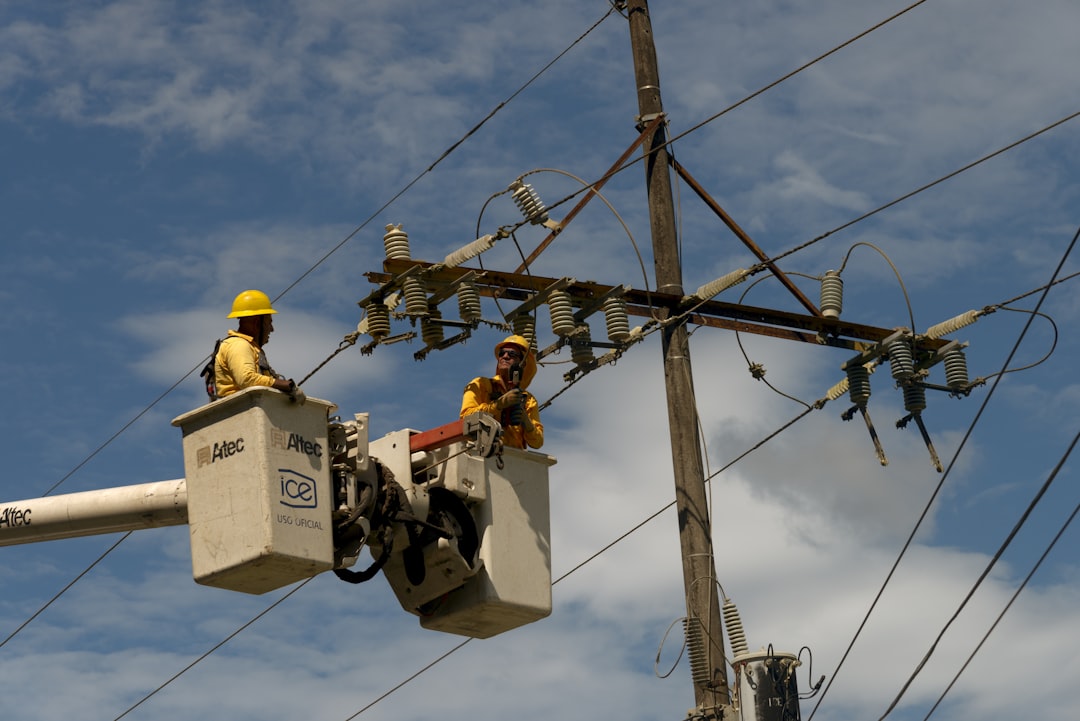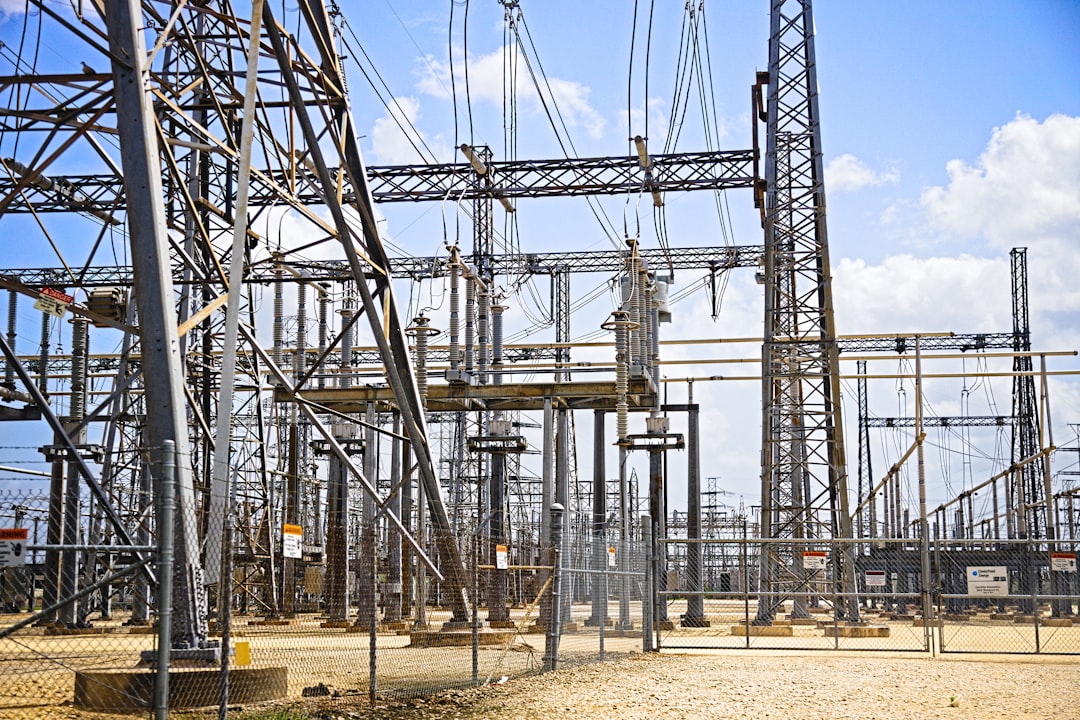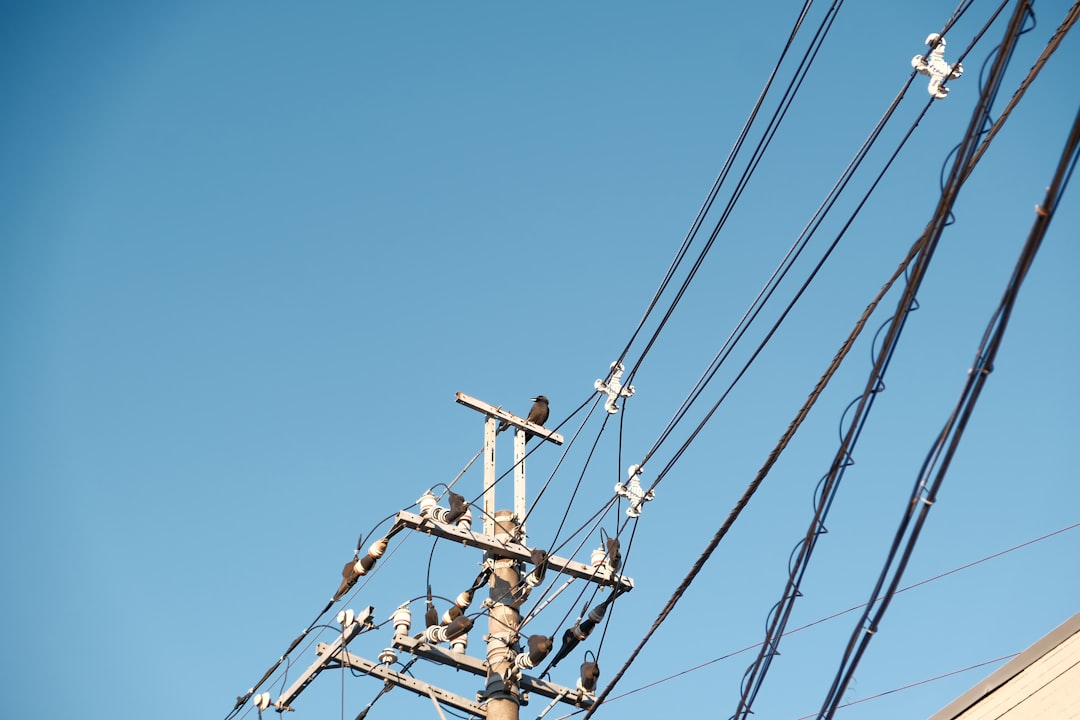

Engage prospects with a scan and streamline customer engagement with FREE QR code marketing tools by Sona – no strings attached!
Create a Free QR CodeFree consultation

No commitment

Engage prospects with a scan and streamline customer engagement with FREE QR code marketing tools by Sona – no strings attached!
Create a Free QR CodeFree consultation

No commitment
For utility contracting companies, navigating complex project requirements, regulatory mandates, and stakeholder expectations demands both efficiency and innovation. Yet industry leaders are familiar with persistent pain points: crucial site data lost on paper forms, incomplete compliance records, and lost time tracking down the latest documentation. As infrastructure projects evolve and competition intensifies, these inefficiencies increase risk and divert focus from value-adding work.
Teams are turning to digital solutions to overcome the gap between offline jobsites and modern project oversight. QR codes have emerged as a critical tool for bridging these environments, as shown by QR codes in construction, ensuring valuable project signals are never missed and documentation stays current. With a single scan, utility contractors can now surface real-time compliance details, safety checklists, and project updates, empowering teams to capture more opportunities, respond faster, and deliver greater transparency to clients and regulators alike.
This article explores how utility contracting companies can tap into QR code solutions to accelerate project timelines, meet compliance requirements, and improve communication across utility contracting services. By weaving smart QR code workflows into daily operations, organizations turn every jobsite, asset, and printed touchpoint into a gateway for efficiency and measurable value while overcoming familiar operational frustrations with practical, technology-driven approaches.

Utility contracting teams often face the challenge of gathering accurate site data amid time constraints, unresponsive paperwork, and inconsistent record-keeping. Missed information not only increases compliance risk but also slows project progress. Modern QR code solutions address these common bottlenecks by creating a direct link between every jobsite and its digital records, transforming physical workflows into traceable, real-time interactions.
Here is how QR codes streamline high-impact workflows and solve persistent collection and tracking gaps:
With advanced QR platforms like Sona QR, field teams automate each step: generating dynamic QR codes, linking scan data to project management tools, and eliminating reliance on manual entry. This helps utility contractors close long-standing data visibility and operational gaps while making daily tasks simpler for crews and supervisors.
Utility jobsites often rely on outdated analog processes such as clipboards at the gatehouse, sign-in sheets taped to trailers, or laminated safety cards that go out of date within weeks. QR codes replace those friction points with mobile-friendly forms, updatable destinations, and integrated analytics. The result is faster access to information, fewer clerical errors, and a reliable stream of data that supports decision-making at the project and portfolio level.

Utility contracting companies operate in fast-paced, highly regulated settings where delayed or incomplete data can translate directly into project slowdowns or compliance issues. A common frustration is the lack of access to up-to-date safety protocols and the inability to track field engagement in real time, illustrated by QR code security for construction contexts, often leaving contractors exposed to regulatory risks or missed bid opportunities.
QR code applications bring direct solutions to persistent challenges:
In practical terms, adding QR codes to work orders, ID badges, and site materials ensures that valuable interactions never disappear. Utility contractors gain proactive oversight of safety and compliance activities while signaling accountability to clients, regulators, and community stakeholders.
Contractors regularly struggle with fragmented documentation, forgotten contacts, or ambiguous maintenance histories. Purpose-built QR code formats solve issues at the source by matching the right destination to the right jobsite interaction.
Static codes are best for permanent resources that rarely change, such as an evergreen safety video. Dynamic codes are better for changing procedures or campaigns, because they can be edited and tracked without reprinting. Sona QR supports both, allowing utility contractors to standardize code generation and analytics in one place.

Traditional print and manual processes often leave contractors in the dark about who has accessed key documentation, which assets are in use, or where emerging project interest lies. QR codes, positioned at high-impact touchpoints, provide both a direct communication channel and a data stream for continuous improvement.
By leveraging QR codes on field signage, fleet vehicles, and printed collateral, utility contractors transform static touchpoints into data-driven resources. This approach reduces operational blind spots and surfaces untapped growth potential such as identifying frequent inspectors, engaged municipal stakeholders, or subcontractors who may be ideal partners for future bids.

Every unreported incident, misplaced safety log, or missed compliance update represents a real risk or a lost opportunity. QR-based workflows convert these vulnerabilities into trackable, actionable digital signals that are easy for crews to use.
Additional practical applications include QR-enabled utility locate requests, trench shoring inspection attestations, training verification for confined space entry, and customer feedback at restoration sites following outages. Each scan creates a time-stamped record that supports safer operations and cleaner audits.
By anchoring QR codes to natural points in the workflow, contractors avoid adoption hurdles. Crews benefit from quick access, management benefits from traceable data, and clients benefit from more transparent reporting. Over time, this creates a virtuous cycle where insights from scans inform better planning, resource allocation, and stakeholder engagement.
In the utility contracting space, not all audiences are created equal and missing high-fit decision-makers costs real revenue. Too often, companies lack visibility into who is interacting with their collateral, attending jobsites, or consuming critical resources. Every QR scan, however, captures intent, context, and timing that help turn previously anonymous activity into qualified opportunities.
For utility contractors, smart segmentation often distinguishes between utility owner representatives, AHJs and inspectors, prime contractors and subcontractors, and community stakeholders. Those signals, coupled with project timelines, allow you to offer the right resource at the right moment such as a capabilities deck ahead of a pre-bid meeting or an inspection checklist before scheduled testing.
Disjointed communication channels can confuse stakeholders and lead to wasted marketing spend. Utility contractors often experience fragmented messaging between printed collateral, field deployments, and digital campaigns, which can cause disengagement or missed opportunities. QR codes act as the linchpin, offering a unified bridge between every real-world and digital channel.
By orchestrating these interactions from a central platform with unified analytics, utility contractors maintain consistent messaging and nurture prospects at every stage. Sona QR centralizes code creation, tracking, and integrations so that scans captured in the field feed the same data engine that powers your email, CRM, and analytics stack.
QR initiatives deliver the most value when they are designed as repeatable, data-driven workflows rather than one-off experiments. Use the following steps to plan and execute a campaign that fast-tracks adoption and proves ROI on the jobsite.
Start by identifying operational pain points with clear business outcomes. Common goals include improving workforce check-ins, accelerating incident documentation, reducing rework related to outdated plans, and providing evidence of compliance during audits.
Choose between static and dynamic QR codes. Static codes suit fixed resources like a general safety orientation video. Dynamic codes are best for editable, trackable destinations such as live project dashboards and forms that may change during the project.
Design for clarity and scannability in rugged field conditions. Use strong color contrast, adequate size, and a clear call to action that explains the benefit of scanning.
Place QR codes where crews already pause or interact with information. Consider signage durability, weather exposure, and the physical environment so that codes remain scannable for the full project duration.
Turn every scan into actionable insight. Use analytics to see who is engaging, where drop-offs occur, and which placements drive the most value.
Start creating QR codes for free.
This campaign model not only boosts immediate efficiency but also reveals where friction still exists. Over time, the data shows where missed engagement or breakdowns occur so you can refine processes and extend successful patterns to other sites and functions.
Utility contracting firms are under increasing pressure to justify technology investments and prove ROI to both clients and regulators. A lack of visibility into who is interacting with key project resources often leads to missed opportunities for improvement or revenue attribution. QR scan data addresses this blind spot by turning every interaction into a measurable touchpoint.
With Sona QR and Sona.com, contractors go beyond basic scan counts. Sona QR captures device, time, location, and campaign source. Sona.com enriches those signals through identity resolution and multi-touch attribution, connecting anonymous scans to known buyers and stakeholders. Integrated Buyer Journeys link QR scans with website visits, ad clicks, email engagement, and CRM activity to create a complete picture from first touch to purchase readiness. This helps teams allocate budgets effectively and defend the business impact of QR-enabled workflows.
Early wins become durable advantages when teams standardize best practices across projects and divisions. The following tips help maximize usability, data quality, and ROI.
Creative deployments that fit utility workflows include QR codes on daily tailboard sheets to verify attendance and topic completion, and QR codes on restoration door hangers that allow residents to report issues or request follow-up. Both examples reduce administrative friction and produce data that management can rely on.

Proven applications illustrate how contractors turn scanning into value. Use these ideas as a starting point and adapt them to your environment.
Additional inspiration includes QR-enabled utility locate confirmations, dynamic codes on temporary traffic control plans linking to current detours, and QR-based training acknowledgments that sync with HR systems to verify operator qualifications.
Consistent results depend on attention to environmental realities and human behavior. A few expert practices prevent most deployment issues and raise adoption across crews and partners.
By proactively managing deployment and monitoring, utility contractors avoid the pitfalls of underutilized codes, ambiguous destination links, or wasted technology spend. Done well, QR codes turn risky paper processes into reliable digital systems that scale from one project to many.
Utility contracting companies face heightened oversight across safety, environmental, and operational domains. Digital adoption varies widely by firm and region, yet the trajectory is clear: owners and agencies expect verifiable records delivered quickly. QR-powered compliance management creates a tangible advantage by providing instant, portable proof of procedures, audits, and training acknowledgments. That proof is invaluable during surprise inspections or project closeouts.
QR workflows also support sustainability and cost reduction. Digitizing documentation cuts paper waste and printing expense and enables automated ESG reporting. Teams can quantify reductions in printed material, track digital engagement, and incorporate those metrics into client-facing sustainability narratives. This strengthens differentiation in competitive bids where environmental performance carries weight.
Beyond compliance and sustainability, QR codes align with broader trends shaping the sector. Digital twins, BIM coordination, and IIoT sensors depend on reliable field data. QR codes serve as simple anchors that connect physical assets to their digital counterparts, enabling crews to update conditions and owners to monitor lifecycle histories. Lean construction and prefab practices benefit from QR-based material tracking and staged workflows that move with the job.
On the economic front, streamlined documentation and real-time project tracking give contractors an edge in both competitiveness and profitability. Proposals that highlight QR-enabled oversight and reporting demonstrate maturity to owners and agencies, while field operations gain day-to-day efficiency, grounded in accurate revenue attribution. Industry leaders showcase best practices such as QR-driven RFP orchestration, analytics dashboards that surface at-risk assets based on scan activity, and integrated workflows that notify teams the moment a safety procedure is updated.
QR codes empower utility contracting companies to transform every physical interaction into a measurable, actionable digital event. With the right workflows in place, organizations capture critical compliance signals, improve safety record-keeping, and reveal engagement that was previously invisible, minimizing the risk of lost opportunities or regulatory lapses. Combined with platforms like Sona QR and Sona.com, contractors can attribute scans to outcomes, segment audiences by behavior, and automate follow-up at scale. The result is a more transparent, resilient, and data-driven operation that consistently delivers better project outcomes.
QR codes have revolutionized utility contracting companies by transforming traditional access management into seamless, data-driven operations. Whether it’s enabling secure site access, streamlining equipment tracking, or enhancing compliance verification, QR codes replace cumbersome manual systems with instant, mobile-friendly solutions that capture real-time data for smarter decision-making. Imagine instantly verifying worker credentials on-site or monitoring asset locations with a simple scan—boosting efficiency and safety across every project.
With Sona QR, utility contractors can create dynamic, trackable QR codes in seconds, update access permissions without costly reprints, and link every scan to operational insights that improve productivity and reduce downtime. No more guesswork or delays—just precise control and actionable intelligence at your fingertips.
Start for free with Sona QR today and unlock the full potential of QR technology to streamline access, enhance accountability, and drive your projects forward with confidence.
Partnering with a utility contracting company improves project efficiency, ensures compliance with regulatory mandates, enhances safety management, and provides transparent communication with clients and regulators.
Utility contracting companies use digital solutions like QR codes to provide instant access to project documents, automate reporting, streamline data collection, and integrate workflows with project management tools, reducing manual errors and delays.
They use QR codes to provide real-time access to safety protocols, automate safety checklists, enable immediate incident reporting, and maintain verifiable compliance records to reduce risks and support audits.
Innovative solutions include dynamic QR code workflows that link physical jobsite assets to digital records, automated compliance reporting, real-time workforce tracking, and integration with CRM and project management systems.
The article does not provide a direct list of top utility contracting companies, but suggests that industry leaders adopt technology-driven approaches like QR code solutions to enhance efficiency and compliance.
Common use cases include accessing safety manuals, equipment maintenance logs, incident reporting, workforce check-ins, utility locate requests, training verification, and customer feedback collection.
QR codes provide instant access to live safety protocols and permit conditions, create time-stamped evidence of compliance activities, and enable defensible audit trails for OSHA, DOT, EPA, and other regulators.
Static QR codes are suitable for permanent resources like safety videos, while dynamic QR codes are ideal for editable, trackable content such as project dashboards and digital forms.
By using analytics to monitor scan volumes, completion rates, and engagement patterns, and integrating QR data with CRM and project management tools to trigger alerts and improve workflows.
Place QR codes at natural workflow points, design codes for harsh conditions, provide simple onboarding for crews, and regularly review analytics to adjust content and placement for better adoption.
QR codes reduce paper waste by replacing printed manuals and forms, support automated ESG reporting, and enable tracking of digital engagement to demonstrate environmental performance.
Challenges include lost or outdated site data, incomplete compliance records, inefficient documentation access, fragmented communication, and difficulty tracking workforce engagement.
Use Sona QR's trackable codes to improve customer acquisition and engagement today.
Create Your FREE Trackable QR Code in SecondsJoin results-focused teams combining Sona Platform automation with advanced Google Ads strategies to scale lead generation

Connect your existing CRM

Free Account Enrichment

No setup fees
No commitment required

Free consultation

Get a custom Google Ads roadmap for your business






Launch campaigns that generate qualified leads in 30 days or less.
